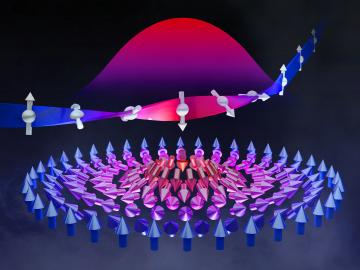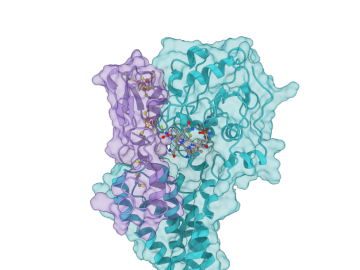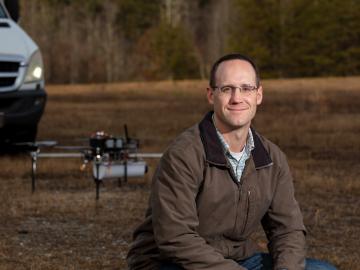
Filter News
Area of Research
News Topics
- (-) Composites (4)
- (-) Computer Science (53)
- (-) Cybersecurity (7)
- (-) Energy Storage (23)
- (-) Frontier (1)
- (-) Isotopes (14)
- (-) Materials Science (47)
- (-) Quantum Science (17)
- (-) Space Exploration (4)
- 3-D Printing/Advanced Manufacturing (33)
- Advanced Reactors (15)
- Artificial Intelligence (9)
- Big Data (12)
- Bioenergy (15)
- Biology (6)
- Biomedical (27)
- Biotechnology (2)
- Buildings (1)
- Chemical Sciences (5)
- Clean Water (3)
- Coronavirus (25)
- Critical Materials (3)
- Environment (32)
- Exascale Computing (3)
- Fusion (17)
- Grid (10)
- High-Performance Computing (3)
- Machine Learning (8)
- Materials (2)
- Mathematics (2)
- Mercury (2)
- Microscopy (13)
- Molten Salt (6)
- Nanotechnology (26)
- National Security (2)
- Neutron Science (45)
- Nuclear Energy (41)
- Physics (22)
- Polymers (12)
- Security (10)
- Summit (19)
- Transportation (22)
Media Contacts

Radioactive isotopes power some of NASA’s best-known spacecraft. But predicting how radiation emitted from these isotopes might affect nearby materials is tricky

Researchers at ORNL used quantum optics to advance state-of-the-art microscopy and illuminate a path to detecting material properties with greater sensitivity than is possible with traditional tools.

Oak Ridge National Laboratory scientists have discovered a cost-effective way to significantly improve the mechanical performance of common polymer nanocomposite materials.

Scientists discovered a strategy for layering dissimilar crystals with atomic precision to control the size of resulting magnetic quasi-particles called skyrmions.

Two staff members at the Department of Energy’s Oak Ridge National Laboratory have received prestigious HENAAC and Luminary Awards from Great Minds in STEM, a nonprofit organization that focuses on promoting STEM careers in underserved

The Department of Energy has selected Oak Ridge National Laboratory to lead a collaboration charged with developing quantum technologies that will usher in a new era of innovation.

A team led by Oak Ridge National Laboratory developed a novel, integrated approach to track energy-transporting ions within an ultra-thin material, which could unlock its energy storage potential leading toward faster charging, longer-lasting devices.

A team led by ORNL created a computational model of the proteins responsible for the transformation of mercury to toxic methylmercury, marking a step forward in understanding how the reaction occurs and how mercury cycles through the environment.

Horizon31, LLC has exclusively licensed a novel communication system that allows users to reliably operate unmanned vehicles such as drones from anywhere in the world using only an internet connection.

Oak Ridge National Laboratory scientists evaluating northern peatland responses to environmental change recorded extraordinary fine-root growth with increasing temperatures, indicating that this previously hidden belowground mechanism may play an important role in how carbon-rich peatlands respond to warming.


